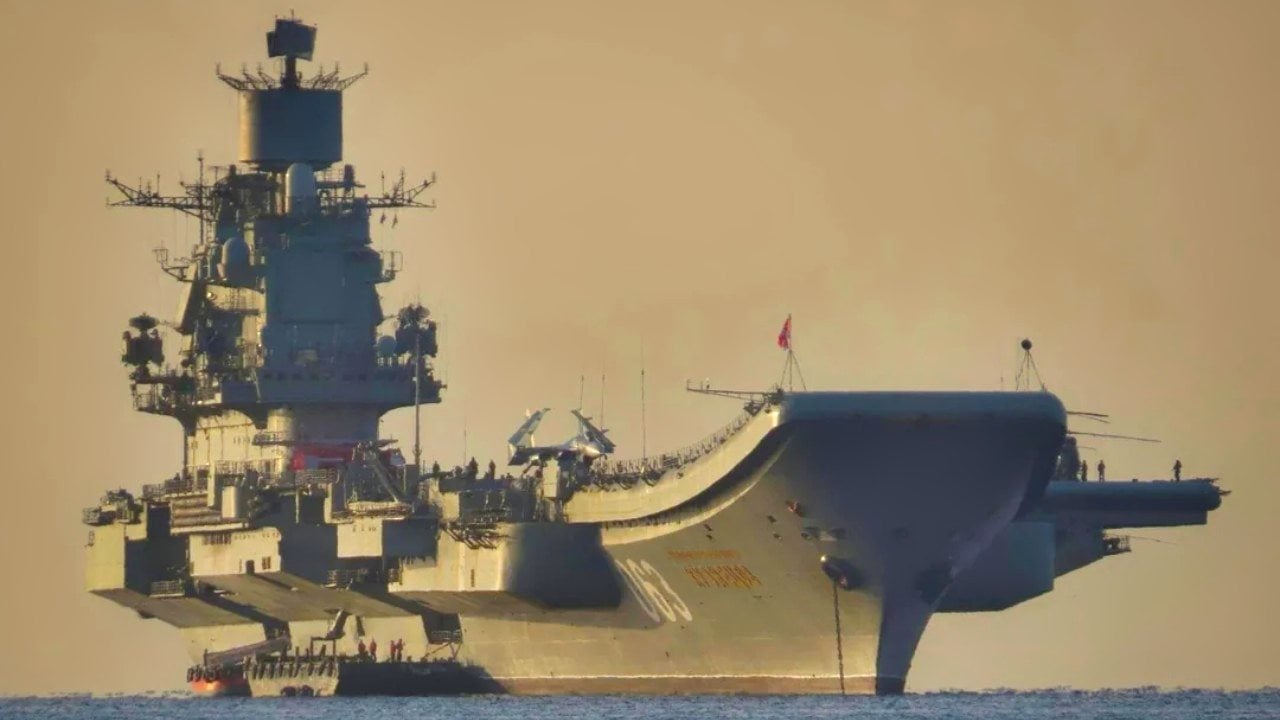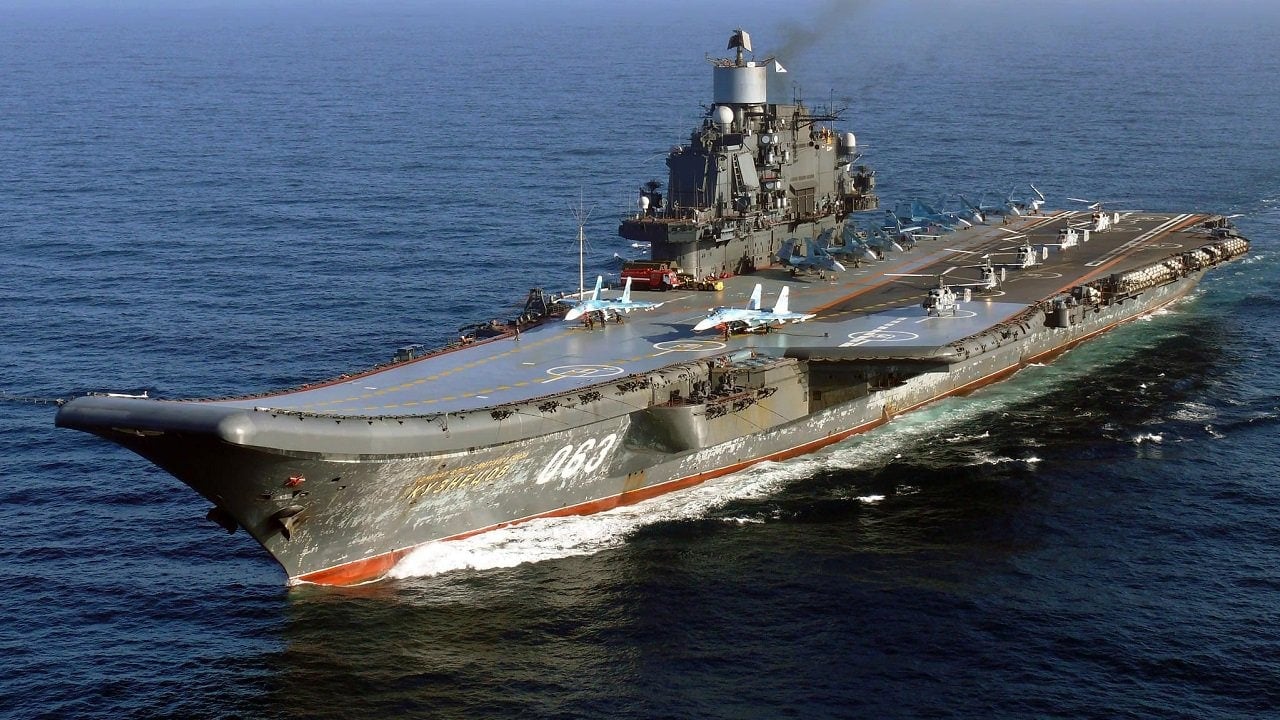Earlier this month, a Russian Navy official asserted that Moscow was making moves to develop a new aircraft carrier with a displacement of 90,000 tons. Vice Adm. Vladimir Pepelyaev told state media, “Our promising aircraft carrier should have a displacement of 70 to 90 thousand tons, but the most important thing is not the displacement, not air drones, but aircraft. Today, we have Su-33 and MiG-29K/Cube. In the future, our aircraft carrier should be armed with Su-57.”

The Kremlin’s aircraft carrier plans likely stem from insecurity. Russia only fields one floating air base today, and its reputation is truly embarrassing. To make matters worse, the country’s flagship has been undergoing an overhaul that started in 2017 and continues to slog through a series of delays.
Introducing Admiral Kuznetsov:
Russia’s sole carrier — Admiral Kuznetsov — entered the Soviet fleet to support and defend missile-carrying submarines and other missile-carrying aircraft as a “heavy aircraft-carrying cruiser.” Many experts say it is in such ill repair it will never sail again.
To achieve these mission sets, the carrier was designed with 24 rotary-style Vertical Launch Systems, each equipped with eight missile cells. According to The War Zone, these systems can theoretically fire 192 SA-N-9 Gauntlet point air defense missiles, which Kuznetsov could use to defend against anti-ship missiles, surface ships, and aircraft. Additionally, the Russian carrier is fitted with six AK-630 cannons and eight Kashtan missile/cannon Close In Weapons Systems.
Shoddy construction, delays and accidents continue to plague Kuznetsov
Kuznetsov’s power is overshadowed by the carrier’s cursed history. Perhaps the ship’s biggest problems are is its fuel source and design flaws.
Unlike modern carriers powered by nuclear sources, the Russian flagship runs on Mazut, a smoky, tar-like petrochemical known to cause health issues. Where Kuznetsov sails, a plume of thick, gray smoke follows. As previously detailed, “Mazut is considered a Bunker B or Bunker C fuel. Bunker is an old term for the fuel marine vessels use and is classified into A, B, or C ranking based on their boiling points, carbon-chain lengths, and viscosities. A ranks higher than B, which ranks higher than C. So, Mazut is a low-quality fuel, in part because it produces so much sulfur and has such negative effects on the environment and the health of the sailors.”
Kuznetsov’s shipbuilders also failed to install proper piping and boiler systems, keeping the Mazut from being efficiently preheated and pressurized. In short, the boilers onboard the carrier are unable to function at full capacity.

Another major design flaw is the bow ramp. Modern carriers typically use a catapult to launch aircraft down the deck. The U.S. Navy’s Nimitz ships use steam-powered catapults, while newer Ford-class vessels use an electromagnetic catapult. Kuznetsov uses a simple bow ramp, which prevents the ship from launching heavier aircraft.
Moscow needs more than the Kuznetsov to accurately call itself an aircraft carrier nation
Kuznetsov’s inability to remain at sea perhaps proves that nations require more than one aircraft carrier to be effective. When Kuznetsov deployed for the first time to Syria in 2016-2017, it lost two airframes due to faulty arresting wires. Such failures appear to outweigh any benefits Kuznetsov provides the Russian Navy.
If Moscow does strive to be an aircraft carrier nation in the future, it will have to scrap Kuznetsov and develop multiple successors. However, considering the funds, resources, and manpower this endeavor would entail, Russia is in no position to reach this goal anytime soon.
About the Author: Maya Carlin, Defense Expert
Maya Carlin, National Security Writer with The National Interest, is an analyst with the Center for Security Policy and a former Anna Sobol Levy Fellow at IDC Herzliya in Israel. She has by-lines in many publications, including The National Interest, Jerusalem Post, and Times of Israel. You can follow her on Twitter: @MayaCarlin.


